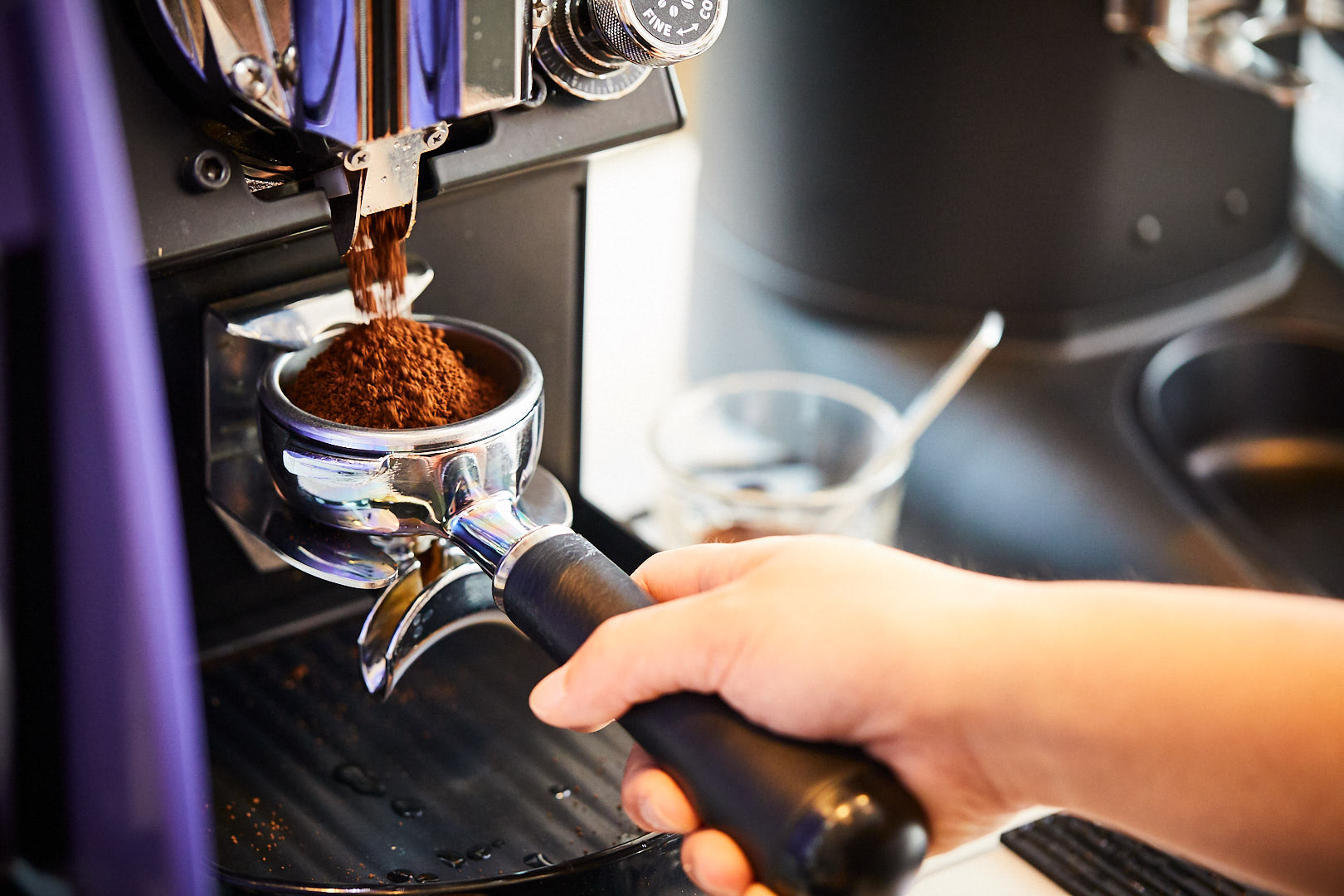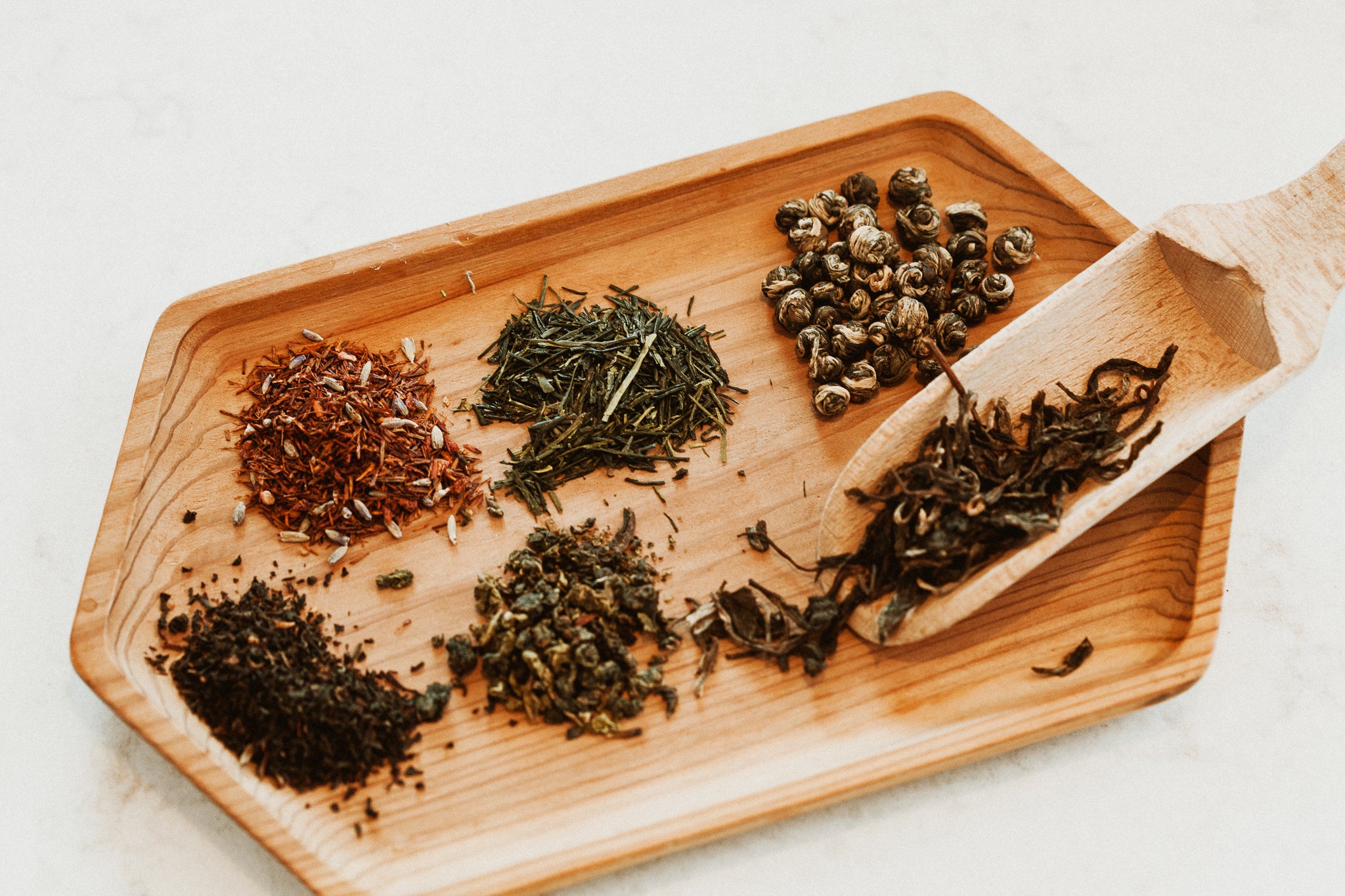As tried-and-true coffee people, we hold a special place in our hearts for our tea friends. Tea is the yin to our yang, and at the end of our socially distant days, we often find ourselves craving its comfort.
Being Tea founder and educator Suzette Hammond, AKA Sooz, visited us at Greater Goods for an all-day tea training in 2017 and 2018. We recently gave her a call to learn more about her practice these days, and how a little tea and a bit of mindfulness can make all the difference.

Greater Goods: First thing’s first, what tea are you hot on right now?
Sooz Hammond: That’s such a difficult question! Hmm. I drink such a variety all the time. I do drink a lot of Japanese green tea. As it becomes available, spring teas are really nice to have right now, too. Later in the year it might be darker oolongs, darker black teas, you know, that kind of thing. But I drink a range all the time.
GG: Sounds a lot like us and coffee! It can be pretty hard to pick a favorite. In 60 seconds or less, tell us your tea story.
SH: I started working in tea in 2003. My background is specifically in education and training.
It’s a little bit of a different path than what you might typically see in the industry, which is working in business ownership, doing retail, marketing, things like that. I only do education and training. For the first 13 years or so, that looked like working for different companies, developing educational curriculum for them, and teaching staff and wholesale clients.
I started my own business, Being Tea, about five years ago. The idea of this business is to help make tea more accessible, so I do training for a wider range of folks now. Basically anyone who would like to learn about tea; whether it’s companies, businesses, organizations, or individuals. I work more one-on-one with people because I’ve realized that accessibility to education can be very hard. I focus on that now, on trying to make education more accessible and more affordable for people.
GG: Was there an a-ha moment when you realized that education was the route you wanted to take?
SH: No, I knew right away that's what I was going to do. Like, really early on. Within the first year that I started working, I became really interested in doing training and education. My background previously was in journalism, so I was already familiar with research and storytelling. That’s kind of what drew me to wanting to be involved with that side of it. So, yeah, I didn’t really question it. I just really loved the education part of it specifically.
GG: Speaking of education... When we taste coffee, we’re typically paying attention to mouthfeel, body, aroma, and flavor. What are you looking for when you taste for quality in tea?
SH: The tasting is very similar and very translatable from different fields, whether someone works in chocolate or cheese or anything like that.
In terms of a direct correlation, coffee and tea have much more direct similarities than any other thing because they’re brewed, prepared beverages. Nothing else really goes through that same kind of process. 
We share a lot of the terms and vocabulary from wine, which has heavily influenced our industry, but wine is not a brewed product, you know? Tea and coffee both are, so they have a lot of crossover in terms of the terms you use.
GG: You’ve said tea is more than just a beverage; it’s a way of life. How does that idea manifest itself in your every day?
SH: When I say that, I mean it’s not something that you’re drinking only because you enjoy it. It’s something that changes how you interact with the world. Tea changes how you move, how you prioritize time, how you view the connections of culture and economics and history and art.
That starts to affect you over time, if you want it to. That’s the thing; you have to be open to viewing it like that. The idea is that tea is more than something you drink because it tastes good. You can learn from it, and you can learn to be a better person in the world because of that.
Up until I started my own business, I had a very two-sided approach to practicing tea. I had what I did professionally, which was a lot of technical training, cupping skills, brewing, tasting, evaluating for quality, things like that, working in food service and cafes and such. It was very technical.
However in my own personal approach with it, for example, I had studied tea ceremony as a student. I also studied mindfulness and movement practices, like yoga and such. Over time, I started to have a deeper connection, and I didn’t feel like I had a professional outlet to talk about that.
I started to feel like it was really disjointed. I didn’t like that there was one way of presenting at a trade show and another when I was interacting personally with it. I think that when we can realize we have more of a connection to foods and beverages in our lives (other than calories and intake), it can be a very healthy thing, mentally. It means a lot more to us when we can be open to that.
GG: Definitely. It’s important to be mindful in all things. It changes the flavors that we perceive, too, when we’re actually paying attention.
SH: It does! I remember a couple of years ago, I was sitting with a group of tea friends at World Tea Expo, tasting some teas and kind of nerding out on things, and everyone had their pots out, brewing the secret stash of what they brought with them. Just for a moment, I listened to the words that everyone was using and I had this almost out-of-body experience. I was listening to their words and thinking, man, we are analyzing the hell out of this tea right now! This is just, like, weird! Versus like, can we feel it a little bit more?
 And yes, when you tap into that, it does change the words that you use. It becomes less analytical and you realize you don’t need quite such colorful language for it. It’s much more about feeling.
And yes, when you tap into that, it does change the words that you use. It becomes less analytical and you realize you don’t need quite such colorful language for it. It’s much more about feeling.
GG: We love that. It’s like when we put the word “cozy” on a bag of coffee as a flavor note. It’s like, you get it.
SH: Right! Everybody knows what that’s like, when you have coffee that makes you feel that.
GG: For sure. Tea, also much like coffee, can be an excellent vessel and platform for meaningful conversation and connection. But with social distancing in full swing and no end in sight, how do you continue to foster that sense of community?
SH: That’s a really great question. Everything I do is online now. That was a component of what I did before, you know, I offered online education for quite some time, but now it’s everything. I think what we’re learning is that we can do a whole lot more online than we thought was possible.
I remember having conversations with people, a couple of years ago even, who would want to engage with me for some training. If I offered them the option of doing it online, they were just like, no, no, we gotta do it person. I spent a huge portion of my time traveling because of that, but now I think we’re coming around to realizing that no, this works.
When we’re in a space where we can still see each other but we’re in the comfort of our own homes and we can work with whatever tea we have on hand, we can still drop in and tune in to what’s happening in front of us right now. It doesn't have to be that we’re all tasting the same thing and being really technical about it, right?
A lot of people are doing classes and things that now they would never even consider doing before, just because it’s available so easily. Even though this is such a very different way of how we would have thought we were going to spend our time this year, I still think that there’s a lot of good that can come from that because it’s getting more people to table who would have not been there before.
GG: I mean there’s always that anxiety of going somewhere in real life and meeting new people and, like, what do you do with your hands? It really comes down to the simple physicality of it.
SH: Absolutely. I had even noticed that already in some of my classes. I teach at a lot of different venues; some of it is with businesses and organizations directly, but I also teach at festivals across the country and some studios here in Chicago.
I noticed I would have people that would come to my studio classes who were not people who would normally be comfortable in a tea festival environment. It was interesting to me and I really felt for them, because I understand that. I’m introverted myself, and it’s hard for me to be in such a busy, loud environment as a teacher.
I think we’re seeing that more-so online. People are testing it out and feeling like this is a safe space where they can learn something new that could help them, so I think it’s kind of cool, actually.

GG: It’s an unexpected plus to all of this.
SH: I think so, I think so.
GG: Looking at the Being Tea schedule, it seems like you’re staying pretty busy these days. What keeps you focused and inspired?
SH: I think allowing ample time to rest in between and take things slow, giving myself space to consider and think, rather than rushing from one thing to the next.
If you don’t have space, you can’t really see what the other possibilities are. For me, that time to be quiet is time to consider what else is there and where else could this go.
Some of the things I’m working on, I recognize, are more longtail. They’re going to take years to really get there, and they come in little baby steps. I think space allows you to consider the present moment that we’re in and the needs of that. The things I’m doing right now are really different than they were six months ago because the needs are different.
When we can allow that space to see the present, rather than rushing through it and ignoring it, we’re going to see opportunities and inspiration a lot more easily than if we were blind to that.
GG: How can one carry out a simple tea meditation at home?
SH: I think it’s something as simple as trying to separate the time that you’re making and enjoying the tea from any other activity that you’re doing.
Set aside 10 or 15 minutes to un-distractedly (no phones, no email) make yourself a cup of tea and sit down with it. Drink very slowly, a sip or two at a time. Set it down and notice the sensations of how it feels as you’re drinking it: how it feels to swallow, what the body feels as you start to just ease into it. It may not even be until the end of the 15 minutes when you start to feel the sensation of letting go a bit. We’re all carrying a lot of tension right now, so it takes time. But it takes repetition, too. Getting into a mindfulness practice with something isn’t about the one weekend that you do a silent retreat and that’s it. It’s little moments throughout the day, little things that you can do that give you some breathing room.
The mindfulness part of tea is something that’s really important to me - 50% of the programming I offer is actually just in tea meditation and in mindfulness. As I started to connect more with that, it changed me as an educator.
We can learn different ways to brew it, different teas to use, different breathing exercises, how you can simply be with it… There’s a whole range of what you can get into. But really, it starts with that first 10 or 15 minutes you do something while paying attention to the full of what’s there, not thinking about what you’re going to do later that afternoon, not worrying about what you did yesterday that you didn’t finish, only what’s right in front of you.
 GG: That’s great. This part of it is just as important as the technical aspects of tea, if not more so, for people to hear right now.
GG: That’s great. This part of it is just as important as the technical aspects of tea, if not more so, for people to hear right now.
SH: I agree. It’s easy to get wrapped up in the technical details. There’s this idea of transactional-based learning, where we think there’s a checklist and we want to go through it to get to the end and then we’re done, like, we’ve learned all of it. That’s a very contained way of learning that’s not so great for us, as opposed to a much more expansive way.
GG: Right, it’s a practice.
SH: Yeah. When we can think of it that way, I think the possibilities of what we see as benefits are a lot wider. The way we talk about the benefits of tea can be very health-focused, like, how many antioxidants are in it, what diseases does it prevent, etc. I think that’s very othering. It’s thinking of the tea as outside of you and then it’s just a drug, versus the culture it comes from and what it represents, which is way more expansive.
--------------
If you would like to explore more about tea education, Sooz offers new live events and all-day classes each month on her website. Topics include functional and sensory technical skills, as well as tea mindfulness study. Monthly memberships begin at $5 for individuals.
Suzette Hammond is an award-winning teacher and professional tea trainer. Since 2003, she has been working with leading tea companies, trade organizations and non-profits across the US. She is the founder of Being Tea - an education-focused business offering customized tea workshops, interactive online learning programs, and professional Teacher Training. Her teaching style centers on fundamentals of sensory-based adult learning, addressing accessibility issues, and promoting psychologically-sensitive teaching methods. Suzette is also a certified trauma-informed yoga and meditation teacher, and has been teaching tea meditation since 2010, bringing together two deeply therapeutic physical studies and philosophical traditions. Additionally, she co-founded the American Specialty Tea Alliance (ASTA), and is the appointed US Tea Ambassador for Vietnamese Tea. Suzette was honored for her dedication to tea education through Being Tea with a World Tea Award for Best Educator.



